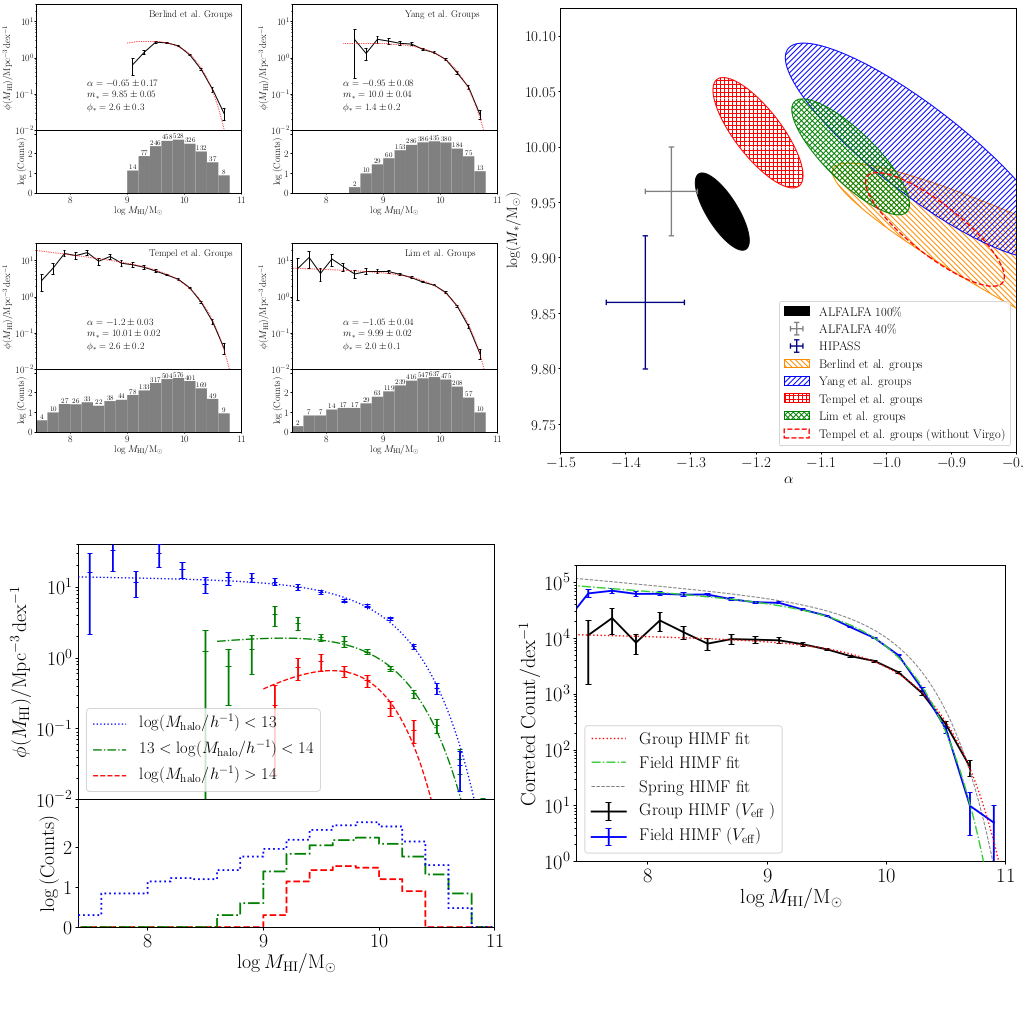Daily Image
21-04-2020The Galaxy Group HI Mass Function
| Submitter: | Kelley Hess on behalf of Mike Jones and fellow co-authors |
| Description: | Neutral atomic hydrogen (which astronomers call "HI", pronounced "H-one") is the most abundant atomic species in the Universe. It is a fundamental fuel for star formation and the presence of HI in part governs how galaxies evolve with time. Astronomers summarize how HI is distributed across galaxies by measuring the HI Mass Function which basically counts the number of galaxies of different HI masses. It is believed the HI mass function varies depending on the environment in which it is measured. For example, the low mass slope (alpha) of the HI mass function may be more steeply declining for galaxies in low density environments, and flatter (alpha closer to -1.0) for galaxies in high density environments. Galaxy groups are an intermediate density environment where the majority of galaxies live, however, until recently they have been a difficult environment to study. Through a combination of direct cross-matching to optical galaxies and proximity matching to known groups, we identified all the HI-detected galaxies in the ALFALFA survey that are associated with galaxy groups. Using these few thousand galaxies we measured the HI mass function based on four widely used optical groups catalogues from the SDSS survey (top left). In general, we find that the low-mass slope is flat. This means that within groups there are approximately equal numbers of galaxies at all HI masses below the turnover in the mass function (m*), whereas in the field the abundance of galaxies progressively increases towards lower masses. Therefore, at low masses the field dominates the global HI mass function, but at high masses the slightly higher characteristic mass (turnover point) found in the HI mass function of groups means that group galaxies are the dominant population (bottom right). We also see a suggestion of evolution in the HI mass function as group mass increases (lower left). The current HI surveys are not quite deep enough to investigate this reliably, but surveys with pathfinder telescopes for the Square Kilometre Array will take the next step. The full article can be accessed here: https://arxiv.org/abs/2003.09302 |
| Copyright: | Published in MNRAS. Jones et al 2020. |
| Tweet |  |
